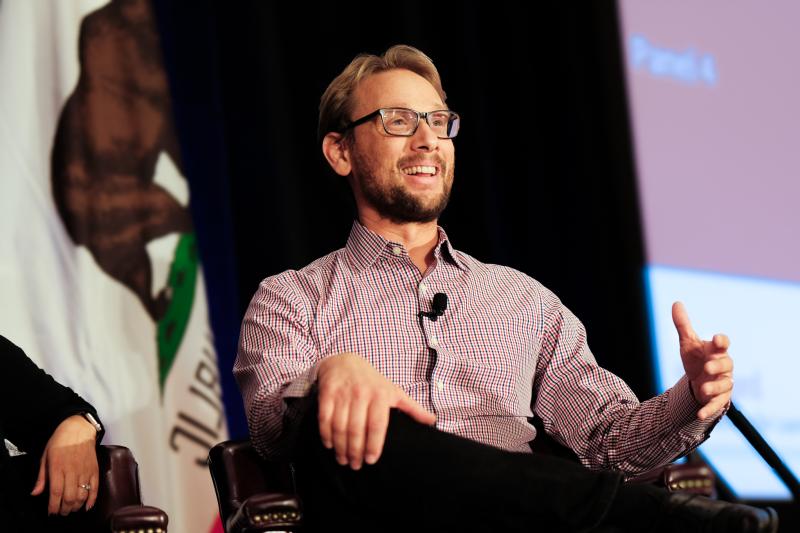
Using 'active learning' to teach critical thinking in the lab
During a fall class at Stanford, 22 aspiring chemical engineers were divided into small teams, each of which had to devise a way to measure how much biofuel they produced in an experiment. As the students shared progress reports during one class early in the quarter, many seemed puzzled about how best to approach the task. Undergraduate Daniel Alber rose to ask a question. The lab provided two different devices that could be used to accomplish one critical mixing step, he said. His team had chosen the vortex, for its blender-like speed. He wondered whether other teams used the shaker platform and, if so, how its slower, circular motion may have affected their results.
During the back and forth that ensued, associate professor Elizabeth Sattely and instructor Lisa Hwang urged students to reflect on why such a simple difference might affect such a complex experiment. The class discussion went to the heart of their teaching method: Have students design experiments, make mistakes, share experiences, and improve their techniques through iteration. By adopting what educators call an active-learning approach Sattely and Hwang hope to help spark a conversation about how to teach critical thinking at Stanford.
The two-term course — Chemical Engineering 185 A/B — is required for majors to graduate. By tradition it had been presided over by two different instructors. The first taught basic lab techniques for 10 weeks, before handing students off to the second instructor, who helped them design and conduct their own experiments in the second 10-week session.
After Sattely and Hwang took over the course five years ago, they spent two years following this baton hand-off approach. “We were frustrated because it was clear that students weren’t learning what we wanted them to learn,” Sattely said.
She and Hwang became convinced that the problem was how the two sessions were organized. The first instructor typically gave students step-by-step instructions on how to carry out experiments, and when they became confused, offered even more detailed instructions. Students learned what to do but not how or why. Then, when students were required to design their own experiments in the B sequence, many lacked the skills or confidence to conceive a project from start to finish. “The old model went straight from cookbook to free form, and that just didn’t work,” Hwang said
Three years ago, she and Sattely set out to overhaul the course. They applied for a Hoagland Award to support innovative teaching at Stanford, and sought guidance from Nobel laureate Carl Wieman, a professor of education, engineering and physics. Wieman is a research pioneer in active learning, an evidence-based teaching method that replaces the traditional lecture with mentally engaging and challenging tasks during which students get timely feedback that guides improvement.
“Our reboot of the class started in a meeting with Carl,” Sattely said. He introduced them to Natasha Holmes, then a Stanford postdoctoral scholar in his lab and co-author with Wieman of a paper titled “Teaching Critical Thinking.” Holmes and Wieman helped Sattely and Hwang devise an instructional plan that leads students through a carefully conceived series of assignments.
Sattely and Hwang now co-teach all of the classes in the A/B sequence together. They have students read a published paper, then divide the class into teams that must replicate the experiment. But rather than tell students precisely how, they offer periodic opportunities for students to interact. Toward the end of the A sequence, teams deliver timed presentations detailing the methods they chose to optimize biofuel output.
Students ask how long other teams ran certain stages in their experiments, at what temperatures and whether their results were statistically valid. The first 10-week session gives students many chances to assess one another and discover common interests as they form new teams to conceive and carry out novel experiments in the B sequence. “It’s not like they suddenly have to shift gears and come up with their own ideas,” Sattely said.
Graduates of the revised course attest to the value of its active-learning approach. Karl Wessendorf, BS ’16, who was in the first cohort of the new ChemEng 185, went to work in the biotech industry, where he came to appreciate how the course taught him to learn from failed experiments. “I had a much easier time transitioning from being a student to a working professional because I’d already made this leap,” Wessendorf said.
Kara Fong, another post-overhaul alum now pursuing a PhD in chemical engineering at the University of California, Berkeley, said the course taught her to organize her thinking instead of merely proceeding from one experiment to the next. “Even now in my PhD research I still do a sort of weekly log like the one I learned in ChemEng 185,” she said.
Encouraged by student reactions, Sattely and Hwang have submitted a proposal to the university’s long-range planning process to create a “Catalyst of Teaching” at Stanford. “We’d like to spark a conversation about collaborative teaching,” Sattely said.



